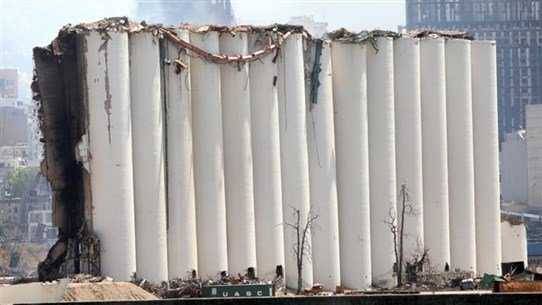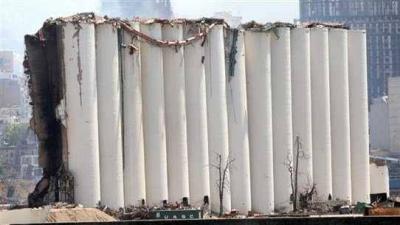The decision by the Council of Ministers to demolish the silos building at the Port of Beirut did not last long, as another exceptional decision is expected to be issued in the coming days to amend it, limiting the demolition to the remaining northern part of the building while exploring the possibility of supporting the southern part to preserve it as a memorial for the massacre that occurred there.
This decision emerged following a meeting held the day before yesterday at the Grand Serail between Prime Minister Najib Mikati, Environment Minister Nasser Yassin, and MPs Melhem Khalaf and Najat Saliba. It entails the demolition of the northern silos and quickly clearing the area of debris and grain, before studying the feasibility of supporting and preparing a plan to reinforce and protect the southern part.
Nonetheless, agreeing on the amendment does not mean the decision is now in effect. The question raised today after such a decision is: Is reinforcement possible? Studies have not yet provided a conclusive answer, according to Environment Minister Nasser Yassin, who noted that a determination requires "us to prepare technical reports and consult on standards for reinforcement and its details and costs." He mentioned that he had contacted "the Engineers Syndicate to inquire, especially since they had prepared a report on this matter." Yassin emphasized that "what is needed today is a comprehensive technical study that considers all engineering opinions before settling on a specific viewpoint, and the government is supposed to commission a specialized team to carry this out."
Thus, there are no clear justifications at the moment, and what was decided in the meeting the day before yesterday at the Grand Serail is merely an amendment decision. However, some experts following the status of the silos have noted several observations regarding this decision, which complicates the path to implementation, particularly concerning the building's cracked foundations and the fire that has been raging in the northern section for 35 days. These two factors currently hinder any decision that may involve utilizing human resources.
### Observational Notes on Implementation
In this context, Dr. Mohamed Abyad, head of the scientific committee for grain handling at the Port of Beirut, addresses the first problem related to the demolition of the northern part for two reasons: "Firstly, we cannot jeopardize the lives of any workers due to the lack of solid foundations for the building, and secondly, there is no mechanism to deal with the ongoing corn fire and the high temperatures it emits." Hence, Abyad believes that this decision "is too late... we cannot demolish."
If the demolition decision is applied, a problem will arise regarding the cleaning of the northern section, particularly concerning the removal of the debris left by the demolition. Abyad questions the fate of this debris and where it will be relocated, raising issues that bring us back to the ongoing situation with debris left by the port explosion, which has yet to be sorted!
The concerns do not stop at the northern part of the building, as there are also some problems with the southern part. According to Abyad, one issue is the quantities of wheat stored in the silos, estimated to be around 3,600 tons, most of which is in the two largest silos. Therefore, addressing this part necessitates resolving the "wheat dilemma quickly to avoid fermentation and fire outbreaks," which certainly requires "a comprehensive study to solve the issue of emptying the silos of wheat and determining the cost of reinforcement." He points out that emptying the silos "is not easy, especially since the foundations on the southern side are not sound at all, even if they are stable." This means "no one will be able to enter unless they are suicidal."
Due to the relative difficulty of the work, Abyad discusses a scenario where the two silos containing wheat are demolished, leaving four silos intact.
The next step involves reinforcement, which also requires a study that considers the "possibility of reinforcement and then finding the appropriate mechanism for it," along with discussions about funding costs and consequently the entity that should finance it. This also presents an additional problem awaiting the outcome of discussions within the technical committee recently formed from representatives of the relevant ministries, the port authority, and the disaster management agency. Will they be able to reach a conclusion?




